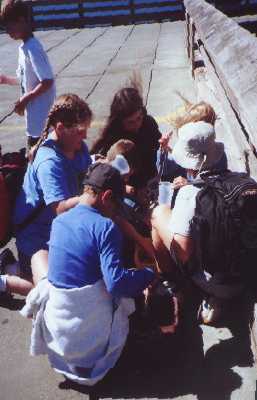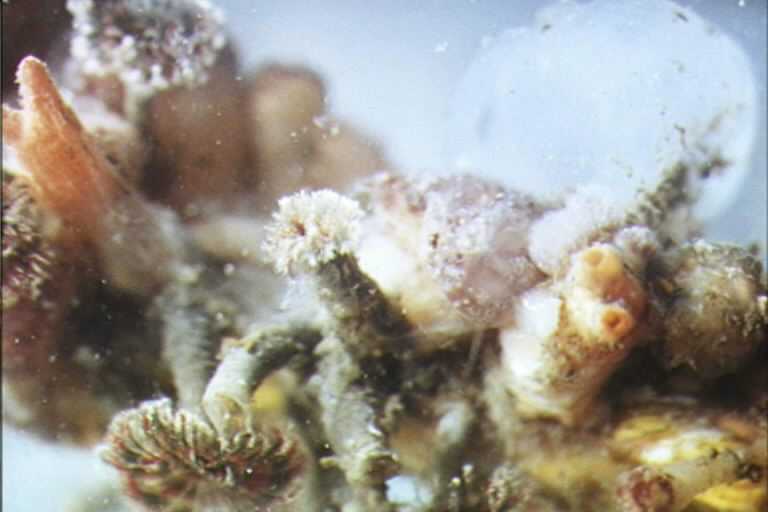For Teachers and Parents
Exotic
Tunicate Activities and Science Inquiry Skills
We hope you will find the activities
described in this website useful tools for engaging students in
inquiry learning. Through these investigations, students can participate
in key processes at the heart of all scientific investigation:
- Designing experiments based on
their own questions and interests.
- Deciding what to measure, how
much, often, and what measurement tools to use.
- Taking and recording data.
- Making sense out of data; using
statistical and other tools to find patterns; comparing findings
to the results of others.
- Presenting results to peers, family
and community.
|
 (Above photo:
Port Townsend
Marine Science Center Summer Camp)
(Above photo:
Port Townsend
Marine Science Center Summer Camp)
|
Exotic Tunicate Activities can also
help students meet the National Science Education Standards. The
following content standards for grades 5-12 are addressed:
Content Standard
A: Develop abilities and understanding
in field of scientific inquiry
Students design, conduct, and
interpret a scientific investigation.
|
Content Standard
C: Expand understanding of life
sciences.
Students explore ecology of
dock fouling populations, conditions affecting species diversity,
and adaptations of invader and invaded populations.
|
Content Standard
F: Explore an important issue of
science in a social perspective.
Students examine the ecological
and economic consequences of introduced species in coastal waters.
|
Some Practical Considerations
1. Resolving Safety Issues. Adult assistance and supervision are essential
for students working over the water. Depending on student age
and maturity, the use of life jackets may be also advisable. Some
marinas routinely require flotation devices on young people.
2. Overcoming Liability Concerns. Liability issues may be raised in school
districts and public marinas for students working over the water.
Other concerns include adequate supervision of students, placement
of experimental materials to minimize inconvenience to marina
users, and expected duration of the project. Good planning and
adequate communication with school and marina administrators well
ahead of the date of student activities can help address these
concerns.
3. Avoiding Vandalism. There is a potential for vandalism of student
experiments left in public places. This can be reduced by placement
of equipment in less conspicuous parts of marinas. It also helps
to have students label their experimental materials with a brief
description of the project and a contact telephone number, using
laminated tags.
4. Working with Seasonal Dynamics. Plates or other experimental substrates
set out in the early winter will accumulate some recruits, but
most recruitment and growth takes place over the summer. Teachers
may want to collaborate between grade levels so that materials
are placed in the water in the spring for students to observe
in the fall when they return. Some plates can also be left in
the water more than one year to follow successional changes over
longer periods.
5. Identification of Organisms-Don't
give up! The numbers of
unfamiliar animals and plants living under docks can be daunting.
Although some organisms are not difficult to identify, it is unrealistic
to expect students to identify everything that settles onto experimental
materials. More challenging organisms can be classified to general
taxonomic groups. Categories such as "Colonial Tunicates,"
"Polychaete Worms" or "Filamentous Red Algae"
are more practical for students and nearly as useful as identification
to species.
 Please
write to us
if you have questions, suggestions, or ideas to share. We look
forward to adding updates to this site based on your feedback.
Please
write to us
if you have questions, suggestions, or ideas to share. We look
forward to adding updates to this site based on your feedback.